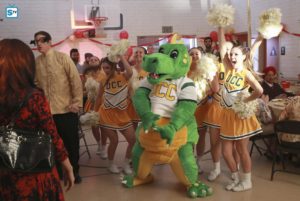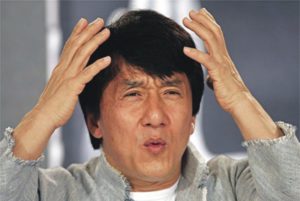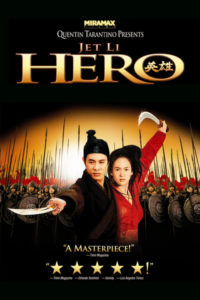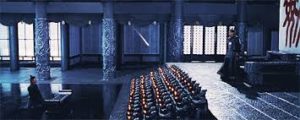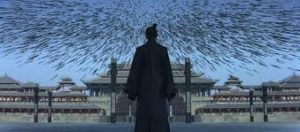Hello Readers!
Back here with my second post as a Fictorian, and the subject couldn’t be more timely. Damage control is a broad subject, but my case is very personal and very specific. I found myself deep in a manuscript headed in the wrong direction, and my early results at damage control only made things worse.
To set the stage- -for the past several months I have been working on my new novel, which is a historical fantasy set in 1950s Nepal. I’m a pre-planner, and thus I had my whole arc planned out, the whole novel outlined and charted and graphed to the nth degree. All of this based on a simple set of dual facts. My main character would be an American (we’ll call him Steve) and the primary sidekick character would be a local young Sherpa girl (we’ll call her Chenji). I set them up for somewhat of a brother/sister relationship with lots of fun adventures, etc.
Off to the races I went, writing about the first half of the story in one big push. Steve had POV for most of the chapters, with Chenji getting a few from her viewpoint as well. As I wrote, some problems started creeping into the back of my head. I wasn’t really aware of them, it was more like that smell that warns you something might be burning in the oven. You sort of notice it, but it’s not enough to get your brain out of the chair and into the kitchen.
So, I put the book in front of some trusted readers. There was a lot that they liked, but on the negative side they came back with two major pieces of feedback:
- Steve was boring as hell
- Chenji was really interesting, but she wasn’t featured enough
Reading this feedback, I felt my (surprised) conscious mind make contact with my (un-suprised) subconscious. Yeah – I guess I already knew this was a problem. Thinking back on my writing sessions, I realized I had been bored writing Steve’s sections, and quite energized while writing Chenji’s.
I could fill a whole new blog post with why I was bored with one character and energized with another, but I’ll do my best to stay on point here. Both my beta readers and I agreed that I had a problem, and we agreed on what that problem was.
The question was: what to do about it?
My first instinct was to troubleshoot Steve and figure out why he didn’t resonate that much for me. I won’t spend time on my process, though it too would be a good subject for another article someday. Suffice to say I came to the conclusion that Steve wasn’t working as the main character because he wasn’t designed to be one. In truth, Chenji had much more going for her: more stakes, more local resonance (the story is in her homeland after all) and a better character arc.
Here finally we arrive at the *real* subject of my post. On one hand, I have the wrong main character for about 45,000 words worth of work. On the other hand: 45,000 words of work! Was I just going to throw all that out and start over?
I really didn’t want to redo all that work. I made a choice that I would swap the focus and the roles, giving Chenji not just the lead role but also the majority of actions I previous had assigned to Steve. It wasn’t as simple as: find <Steve> replace with <Chenji>, but there was some of that spirit in there.
In the end, this was the wrong choice. In the end it was not because the action in chapters was designed for Steve, because I did extensively modify the action to accommodate Chenji’s skills and abilities. No, it was because those actions and those scenes were designed for Steve’s character. His motivations, his story. They didn’t tell Chenji’s story as well.
Additionally, because Chenji came from a culture that would be more unfamiliar to many of my readers, her backstory was peppered with terminology and mores that were more complex. In the end, I laid these on too thick and the scenes became very jargon heavy.
This time, it was harder for me to see these problems. I was, in effect, doing a minor renovation. Painting a wall here, adding some nice tile there. I was too close to these scenes to judge them in their new, modified state. When my readers got a hold of them, their feedback was clear: They loved the new focus, but they were very confused and things just didn’t flow correctly.
In the end, I realized my renovations had not gone far enough. In an effort to preserve some of my previous work, I had used duct tape and paint where dynamite and sledgehammers were needed.
I needed to things down to the studs as it were. Almost everything of those early chapters had to be taken out and completely redone from a blank page to better fit Chenji and her role in the story. It means throwing out (or at least, putting to the side) weeks of work and starting over.
Painful, but in this case it was the right choice. That’s where I am right now with this project. I started with blank pages, fresh framing on which to hang the new drywall of my story. I have been writing all new scenes for both Chenji and Steve, and it is going a lot better. I can feel that it is better, and I am confident my readers will think so too.
So, the lessons learned here for me were plenty:
At all times, listen to that voice in the back of your head. Check in with yourself while writing. Are you excited to write this chapter or are you bored? Are the some characters you enjoy writing more than others? These are early clues you might be headed in a problematic direction.
Sometimes minor changes are all you need to correct an issue, whether it is one you noticed on your own, or an issue several readers might be mentioning. A new line here to illustrate a motivation better or an additional scene to allow the pacing to breathe. The same scene being told from a different character’s POV. Changes that allow you to keep some of your previous work.
Other times though- -you need to break out the sledgehammer. Pull up that tile, rip out the plumbing and teardown the drywall. I’m not going to lie, that’s not my job folks. It’s going to hurt and it’s going to hurt a lot.
Sometimes, you have to go back to the studs.
See you next time!


